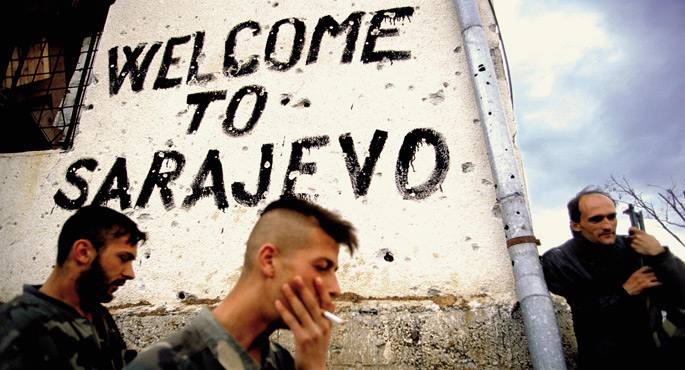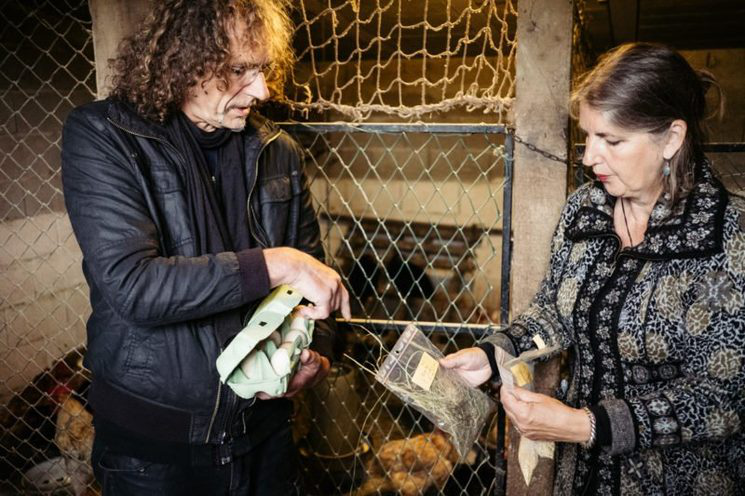War is not in human genes, 10,000 years old.
- Barack Obama, upon receiving the Nobel in 2009, said: “War is sometimes necessary and partly expresses the feelings of the human being.” John Horgan wants to challenge him with his book The End of War. That is, in terms of biology, that the human being is as peaceful as a warrior, that war can be avoided.

John Horgan is a scientific journalist, writer of the prestigious journal Scientific American for years, collaborator of the BBC network and professor at the Stevens Institute of Technology in Hoboken, New Yersey (USA). It's written earlier by connections between science and spirituality. This February has published The End of War, which summarizes and analyzes what has been said so far on the subject from anthropology and biology. For the advanced web Alternet, he has been interviewed by Brad Jacobson.
Horgan wants to put an end to the prejudices that have dominated the war: that he is in the human being, that there have always been people in war, that he is in our genes, that we will not know a society without wars. “I have written a book fundamentally to condemn this negative perspective.”
Exploring the anthropology of war, Horgan discovers that scientists predominate those of that opinion. I mean, war is as old as man, or maybe older, than the old grandfather we have with chimpanzees could also use it.
Almost everyone says that the chimpanzees on one team come together and attack the chimpanzees on the other. Researching the scientific literature that has been published to take this for granted, Horgan finds that there are only a dozen confirmed cases. Richard Wrangham, who says that chimpanzees and the forms of guerrilla warfare of human beings are almost the same, further clarifies that this is a conduct he has rarely seen. Jane Goodall, who specializes in gorillas, also suggested that the practice of fighting may have been born recently, after the man was tightly squeezed by the primates' homes.
The other primates that have become fashionable in recent years are the Bonobos, who have popularized much more peaceful behaviors. “Peaceni [pacifist] loves people, especially the peacenics who believe that human beings are peaceful and welcoming in themselves. I am referring to the investigation of the Bonobos to deal with that chimpanzee issue. But I think we should put chimpanzees and bonobos aside because their behaviors can be very changed.”
It gives more importance to what archaeology says. According to archaeologists, war emerged among humans 10,000 years ago, in different parts of the world, and then spread to everything. So, it's not so old, instruments have already been invented, food cooking, religions, art and music. War is a young cultural innovation.
From the point of view of biology, most people say that competition for war, water, hunting, land and women has been caused by an excessively large population. Today, the main theme of the battle would be oil, according to that. But Horgan believes that this idea also has weak points. Sometimes a charismatic sociopath is able to bring all the people to battle.
Chimpanzee or bonobo?
However, more than a spring, Horgan is interested in mechanics. Once it's on, it starts a dynamic that feeds on itself. “We have to see war as a meme [in anthropology and sociology, the meme is a basic unit of cultural ideas and practices that can be transmitted between people], an idea or a practice that perpetuates itself since it has been created in a place, with a depth and lasting.”
This leads to battles for revenge or as a preventive attack on the enemy. Horgan explains the noise of the wars that are taking place between Iran, on the one hand, and the United States and Israel, on the other.
But just as war tends to perpetuate itself, people can also say “enough.” Horgan has featured three models. Switzerland and Sweden decided a long time ago to have an army but no longer to wage war. Horgan loves Costa Rica even more, which in the 1940s suffered a bloody civil war and since then refused to have an army.
Costa Rica is located in Central America, the most violent region in the world in the last half century, along with Nicaragua, Guatemala, Honduras and El Salvador, and lives in peace. That is why Horgan believes today that militarism and war must first be relinquished, and then democracy, freedom and others come along.
That man is naturally a warrior? Horgan mentions the book On Killing by Colonel Dave Grossman. Grossman has pointed out that most human beings do not want to kill anyone by investigating the practices of American soldiers. II. During the World War it was shown that many infantry soldiers did not shoot the enemy, did not want to kill him.
With the results of the investigation, the US Army hardened its training. In the war in Korea and especially in Vietnam, the soldiers were better targeting the enemy. On the other hand, upon returning home, stress from trauma increased a lot. In the 21st century, it burns farther than before to the enemy, with artillery, mumbai from the plane -- and lately, drones without a pilot. But that's a curiosity. Many of the military in Afghanistan, as if they were playing video games from a base in Nevada, are also stressed by trauma.
There are few people who enjoy washing their neighbour, even in wars, according to the studies mentioned by Horgan, 2%. Many of the others are shot to death. But people put everything in, and blood too. Philip Zimbardo, author of The Lucifer Effect, did an experiment at Stanford University in the 1970s. At Stanford Prison Experiment, some of his disciples were imprisoned and other guardians. By the second day the “guardians” sadly treated the “prisoners”...
Is war a matter for men? On the contrary, Horgan, following anthropologist Sarah Blaffer Hardy, believes that when a group formerly living in peace enters war, wars change the roles of men and women. Gamberradas are a consequence.
He is a disciple of sociologist Horgan Gene Sharp when it comes to war and peace. It has been written a thousand times that Sharp's ideas have greatly influenced the peaceful revolts of recent times. Horgan also believes that war is not a matter for the Social Democrats. “Just as important as man’s own aggressiveness is that people give in to war.”
I'm talking about Interview. With water and sand
Authors: Telmo Irureta and Mireia Gabilondo.
The actors: Telmo Irureta and Dorleta Urretabizkaia.
Directed by: Assisted by Mireia Gabilondo.
The company is: The temptation.
When: April 2nd.
In which: At the Victoria Eugenia... [+]
Euskal Herriko Laborantza Ganberak hogei urte bete ditu. 2005ean sorturik, bataila anitzetatik pasa da Ainiza-Monjoloseko erakundea. Epaiketak, sustengu kanpainak edota Lurramaren sortzea, gorabehera ainitz izan ditu hogei urtez.






















